My Favorite GUI Programs
Sun 27 July 2025
Background
Yesterday, I wrote about why I loved the command-line, and one of my good Fedifriends commented that while he appreciated a good command-line program, he generally preferred GUIs (Graphical User Interfaces).
My personal history in computing started with what you might call command-line computers, although I think it's more accurate to call them "text-based." The first computers I worked with were the various 8-bit offerings, particularly a few weeks or months with a rented Apple ][+, and a Commodore 64, my first personal computer at home that we owned.
I'm hesitant to call these command-line systems, because the basic operating element for the interface wasn't individual command lines, but rather the listing of a BASIC program. You could, of course, enter BASIC commands/instructions one-at-a-time without line numbers (or in other words, without appending them to a BASIC program), but the commands didn't do much on their own.
After using a Commodore 64 at home from early 1982 to much later in the 1980s, I was gifted a Macintosh SE with an internal 20 MiB hard disk as a Christmas present in 1989. This was my first GUI machine, and using it was a formative experience for me, although I had used Macintoshes here and there for several years, including one borrowed from my stepdad's office. But this one was finally my own Mac to keep.
The list
So, I thought I'd make a little list and talk about the graphical programs that were special to me throughout the years, and why. Quick note, I strongly resist the modern trend of referring to computer programs as "apps." You can read that article for the reasons why, but in this post, I will be using the now somewhat archaic term "program" exclusively.
Choplifter!
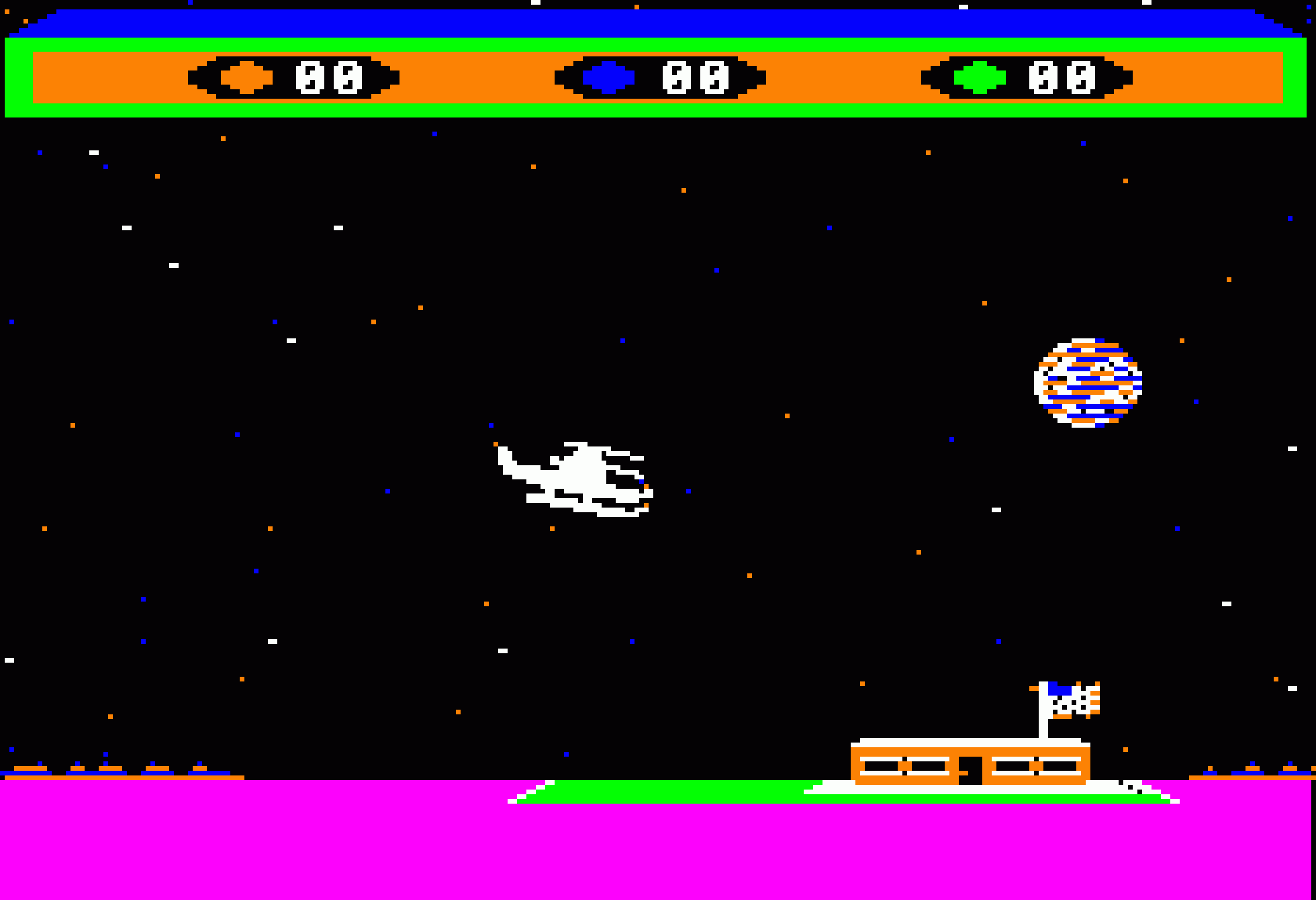
Ok, so it's a bit odd to refer to a video game as a GUI program. But when I think about it, Choplifter! has a lot of the elements of a graphical interface. There are objects that you have to navigate to, but instead of using a mouse and having the mouse cursor as an indicator of on-screen interaction, you have a joystick and the helicopter itself.
Actually, I can't think of a single game or program of any type that did more to prepare me for interacting with onscreen graphical interfaces than choplifter. It was the equivalent of fine motor dexterity training for graphical computer interfaces, and it was a very fun game.
MacPaint
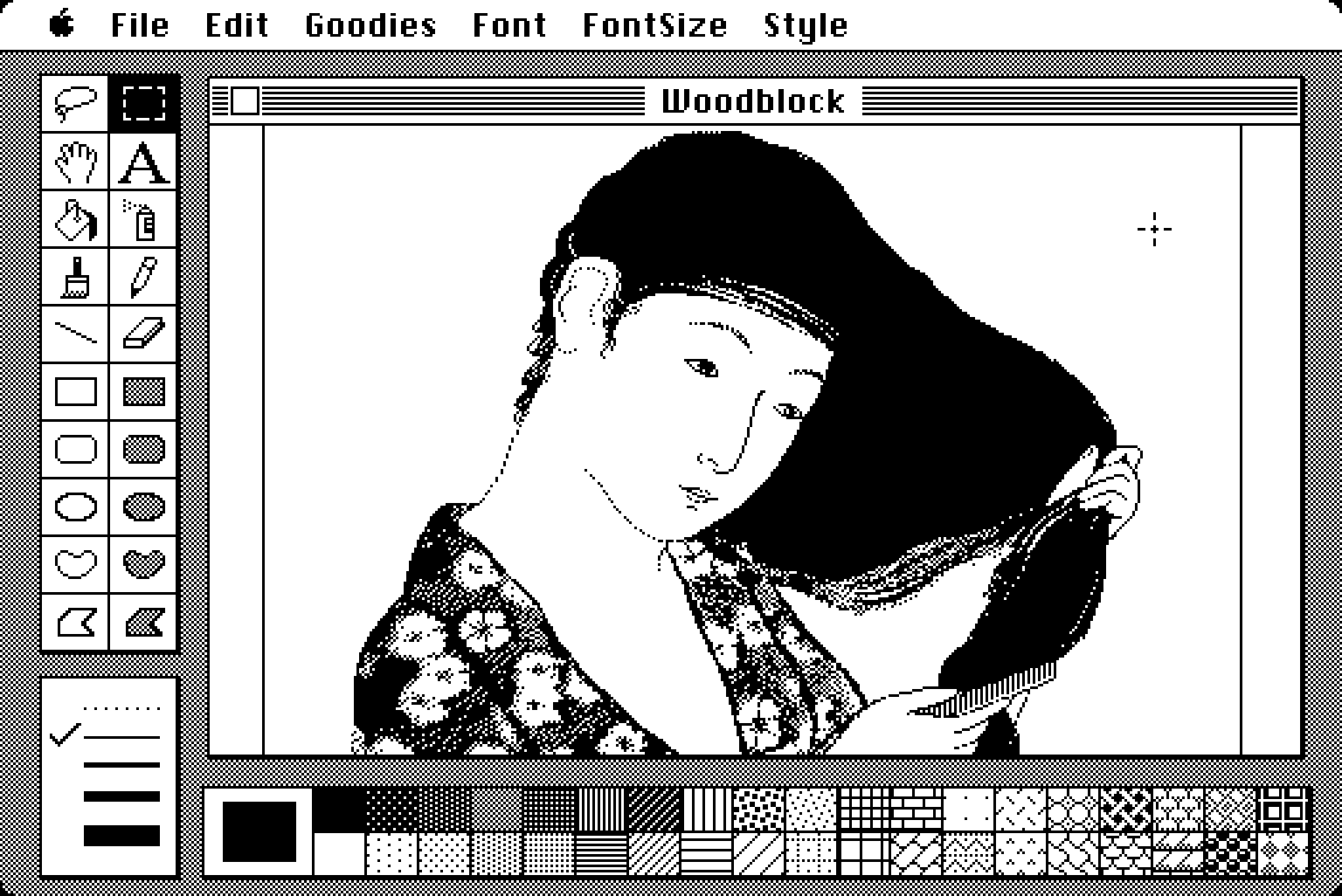
MacPaint was the G.O.A.T. among classic GUI programs. I still remember being a kid playing with a Macintosh for the first time. What must have been no more than half an hour or so felt like hours just sitting in front of that machine in 1984, trying all of the neat tools MacPaint had (the spray can is still such a cool idea!), and printing out my crazy wannabe Picassoesque digital scribbles.
The source code for MacPaint was actually released some years ago, and there are websites based on that source that allow you to enjoy the original MacPaint experience in a web browser. There's also the excellent Infinite Mac that allows you to run a full classic macintosh virtual machine in your web browser.
HyperCard
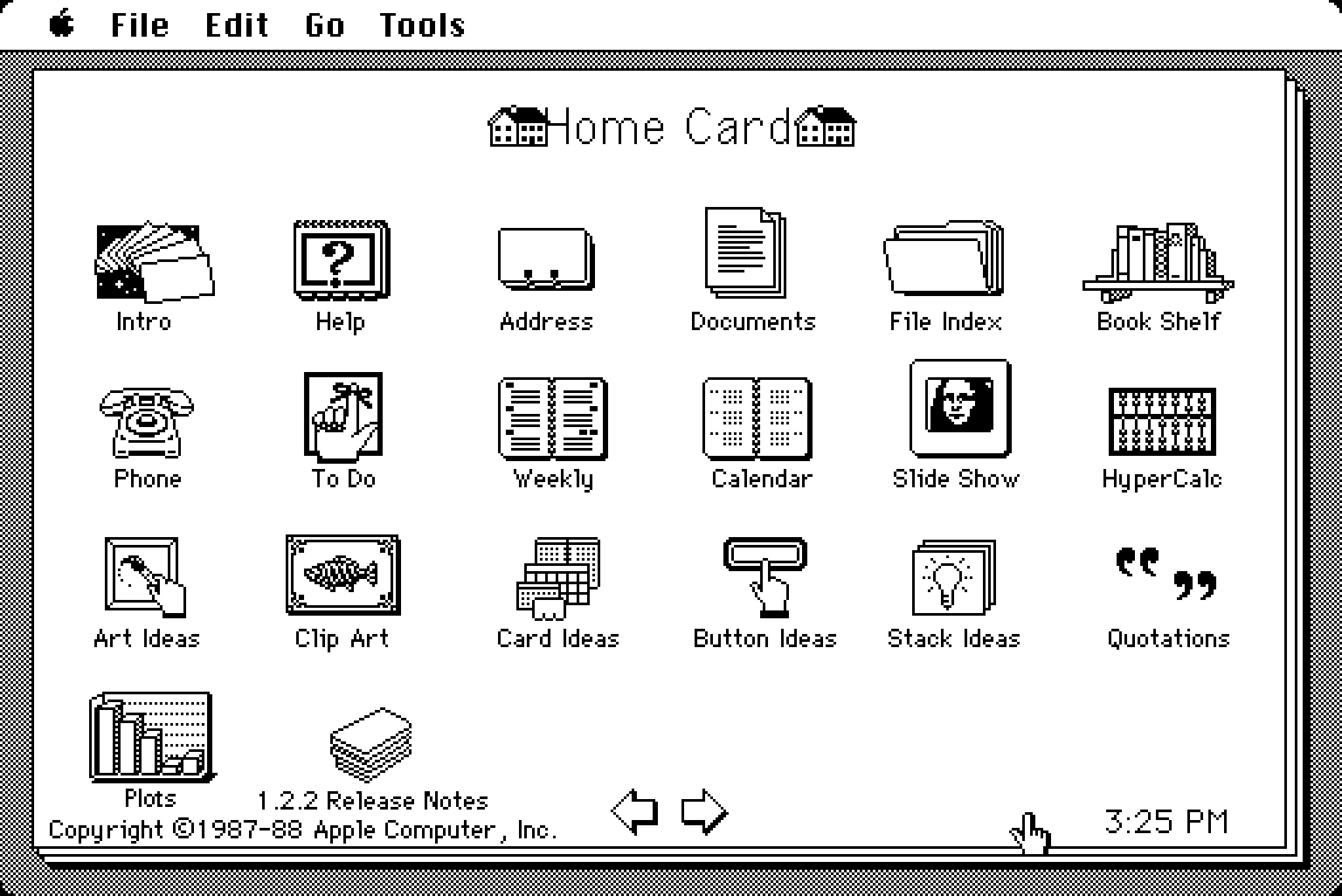
HyperCard could really be thought of as "MacPaint Unchained." It really showed off Bill Atkinson's genius, as it was a paint program, a presentation program, a programming language, and a forerunner to the World Wide Web itself.
With HyperCard, you could do basic doodles, write notes, create presentations, games, animations, and even basic databases.
HyperCard took the creativity of something like BASIC and Logo, and turned it up to 11, while being incredibly easy to use. I don't think I've used anything quite that freeing and creatively-energizing since then. In a way, it was my generation's Minecraft or Roblox. That kind of feeling of limitless creativity. HyperCard even became the basis for some notable games of that era, such as The Manhole, and Myst.
MS Paint
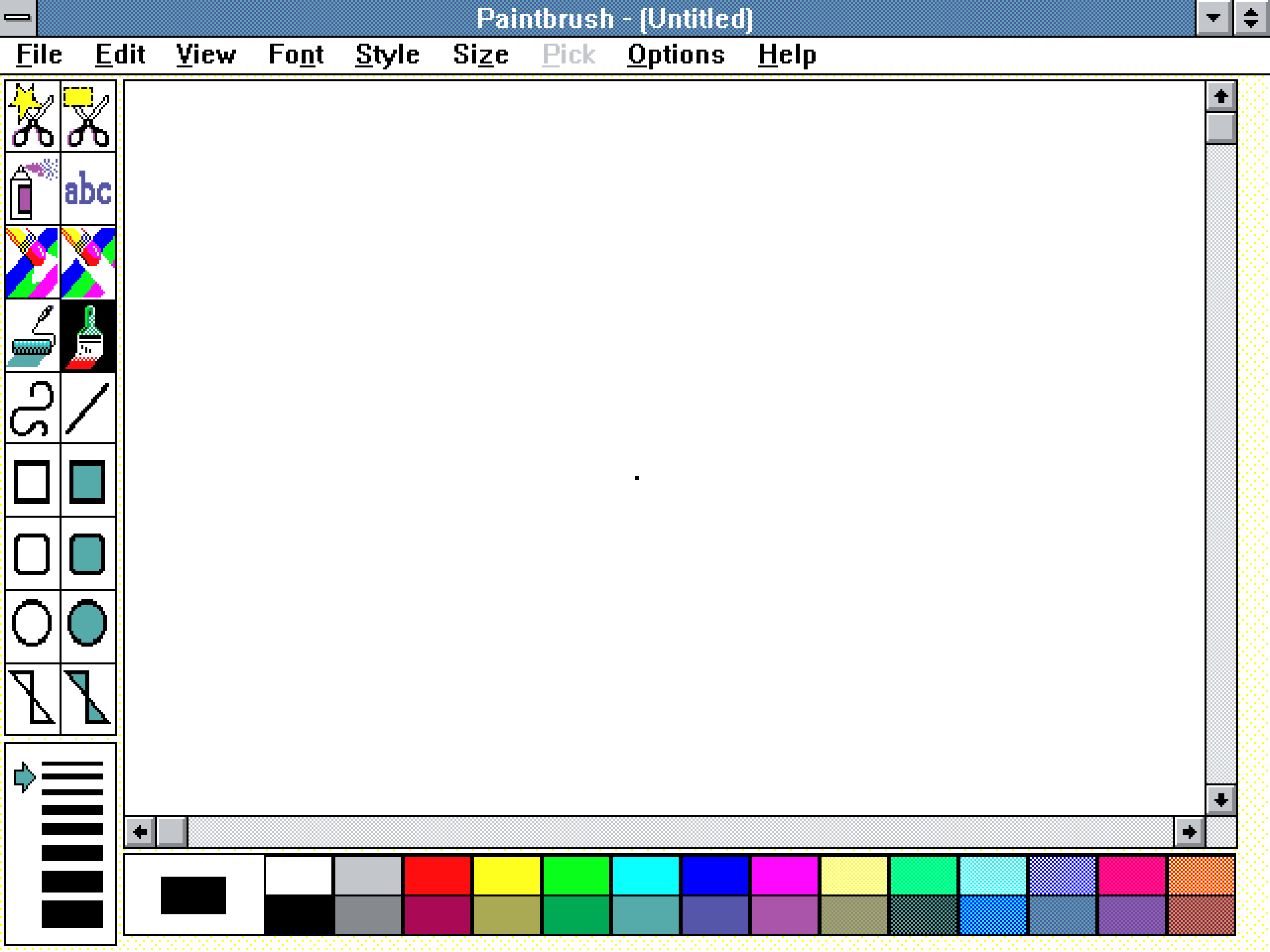
I think just about everyone reading this has used MS Paint in the past, many of which probably have fond memories of it. But I don't think most who think of MS Paint have seen it quite like this. MS Paint in Windows 3.x (simply called "Paintbrush") was far more cartoonish and derpy. According to Wikipedia, Paint in Windows 95 and on was based on a different codebase than the earlier Paintbrush.
While the Windows 95-XP versions of Paint are the ones that most people reading this will remember, those versions look boring, business-like and stodgy compared to the older Paintbrush and its cartoony UI.
While Paint/Paintbrush doesn't have the same nostalgia factor for me as MacPaint, its colorfulness and playfulness are very memorable, and I find the UI appealing even today.
Dillo
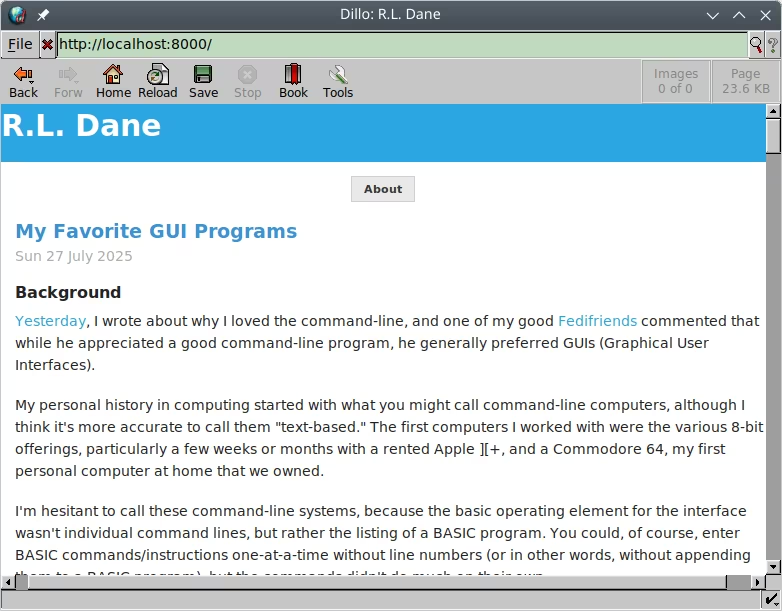
I wanted to include more Linux programs in this list, but since nostaliga is the general feeling here, it's hard to include programs that have been continuously updated and changed through the years, unless I'm pointing to a specific version. The fun exception to this is Dillo, which while it has recently started getting wonderful updates again, is still very, very similar to what it was 25 years ago: an incredibly efficient Web-1.0 browser.
100 Days to Offload 2025 - Day 46
Category: Tech Tagged: 100DaysToOffload Computing FOSS (Free and Open Source Software) Linux Non-religious post Non-technical post Productivity Retrocomputing